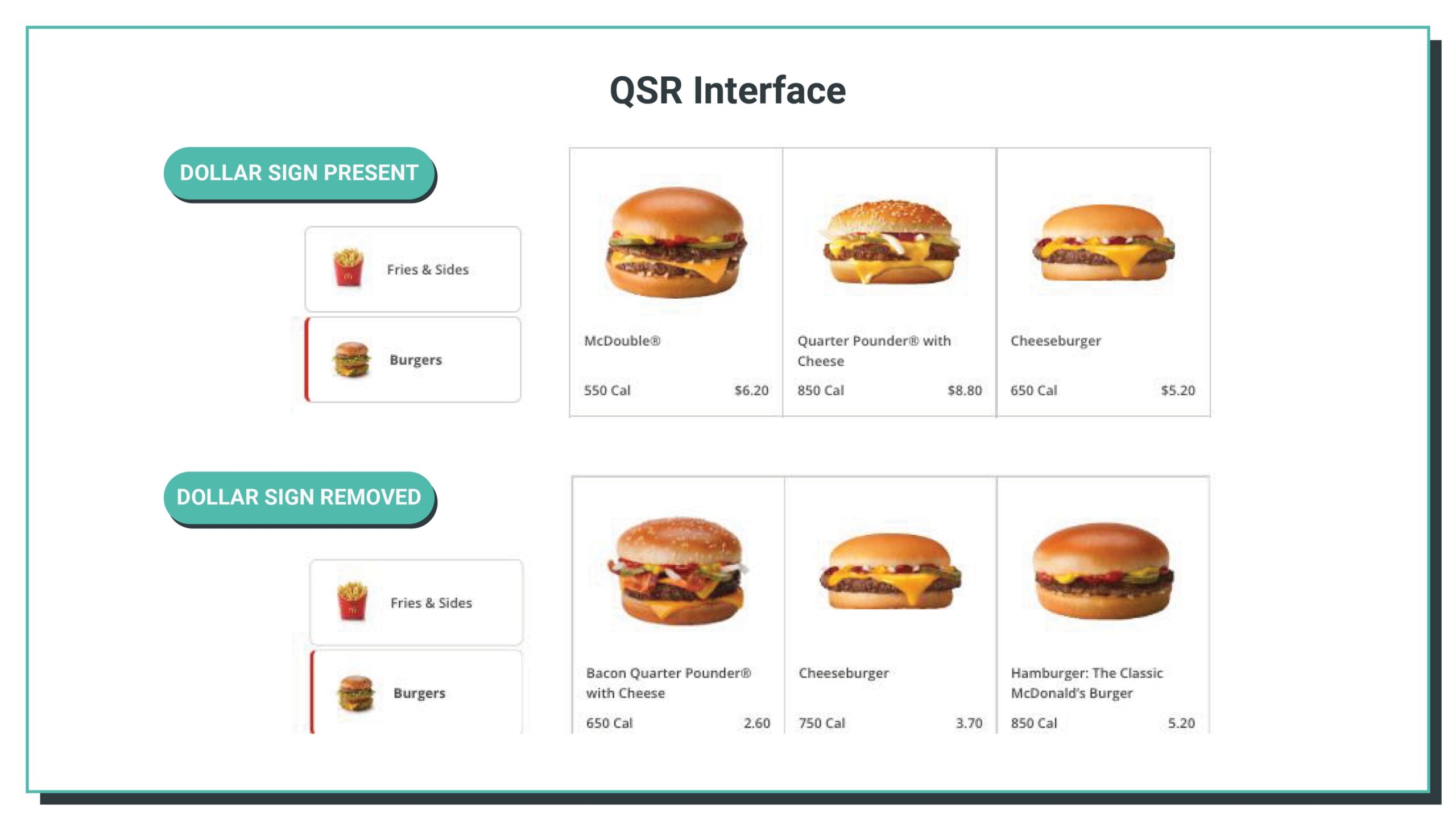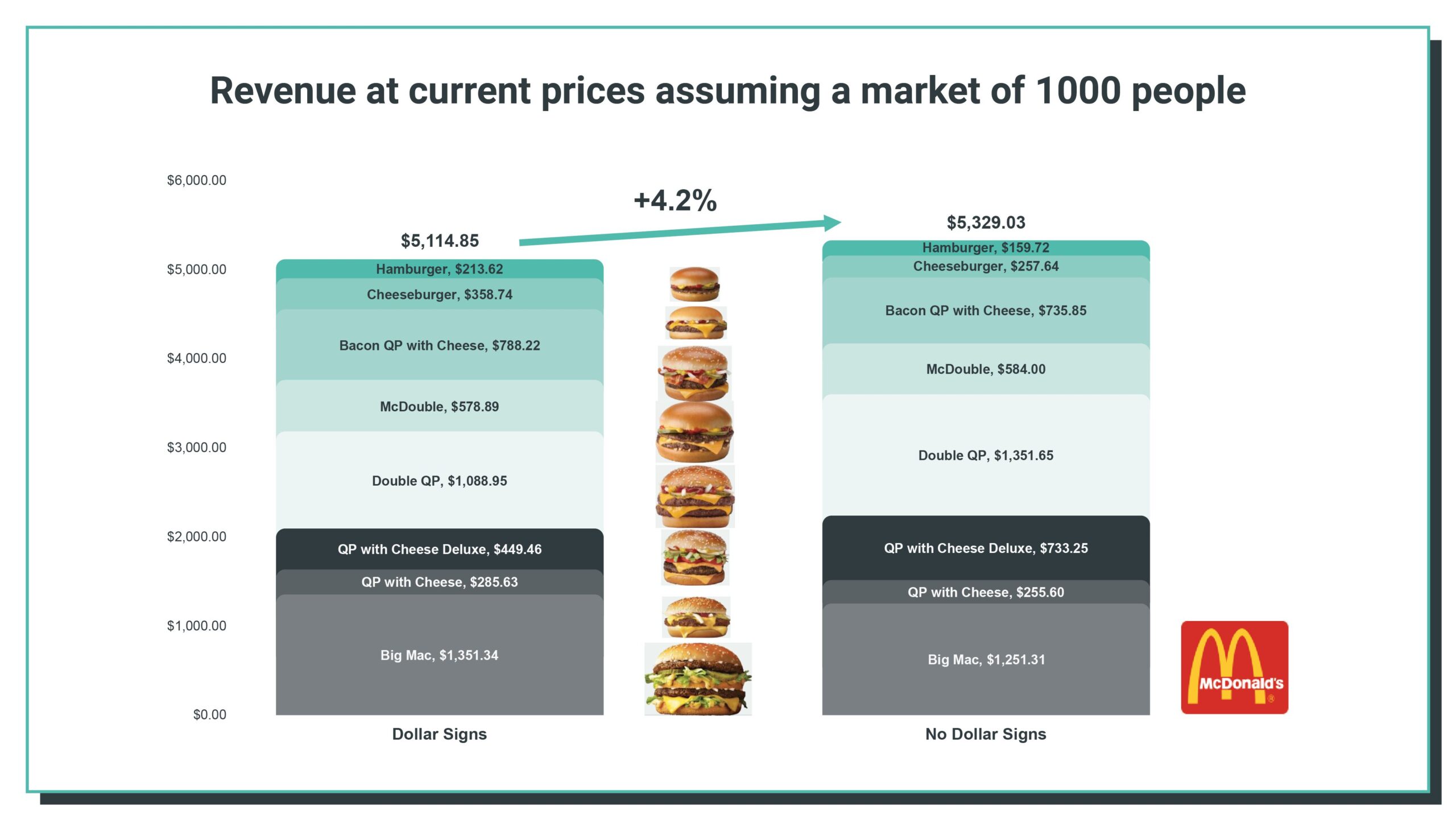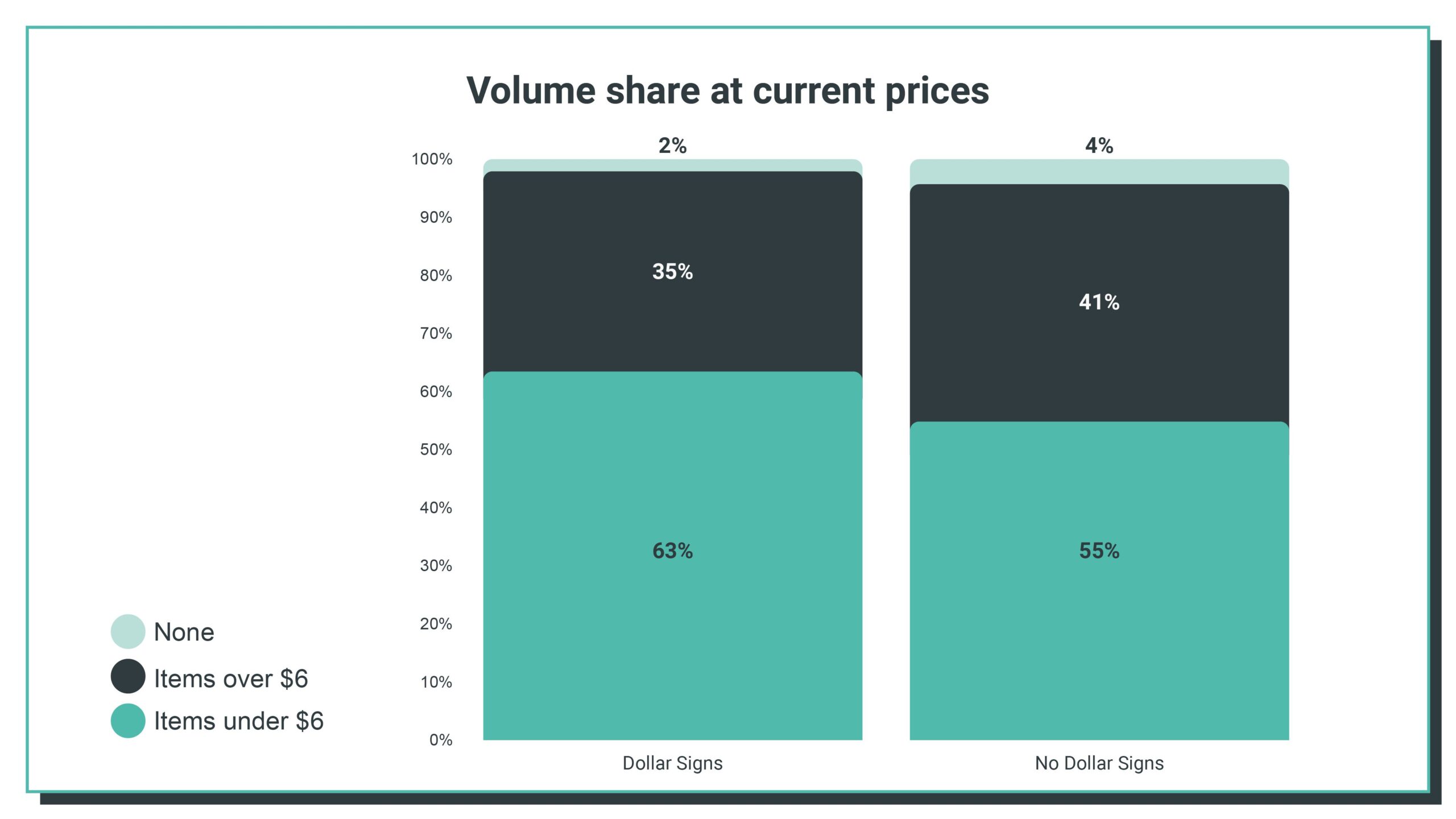One Symbol, Big Impact: What Our Study Uncovered About McDonald’s Menu Change

In early 2025, McDonald’s decision to remove the dollar sign from menus made headlines. Prices remained the same, but the familiar “$” symbol vanished from sight. Almost immediately, a wave of social media posts and influencer commentary praised the move, linking it to a reported 9.5% surge in global sales.
Was such a dramatic sales bump really driven by the absence of a single character?
At EPIC Conjoint, we decided to find out.
Investigating the Impact of Menu Design
While it is now common knowledge in the pricing world that removing currency symbols can reduce the “pain of paying”, attributing a 9.5% boost in sales to this one simple act may overlook the impact of other important variables responsible for the increase. Factors such as menu innovations, regional pricing strategies, and post-pandemic consumer behaviour shifts could have also played a role. With this in mind, we designed a study which controlled for these external factors to isolate the true impact of removing the dollar sign on consumer choices and revenue.
We conducted two QSR conjoint studies, one including prices with dollar signs and the other without, in which each respondent was presented with 10 different purchase scenarios. In each, they were shown a menu of McDonald’s burgers and instructed to select the burger they would purchase. Prices and position of burgers on the menu were shuffled with each scenario.
Both studies were conducted with representative samples of the US population and were identical in every aspect except one: the presence or absence of the dollar sign. By holding constant all other variables—menu layout, product selection, pricing, and respondent demographics—we ensured that any observed differences in purchasing behaviour could be confidently attributed to this single design change. From this controlled design, we were able to derive volume share and revenue simulations for each menu item on each menu variation. This allowed us to quantify the direct revenue impact of McDonald’s dollar sign removal by understanding how demand would vary for each individual product as a result of the change.
What the Data Revealed
Our analysis produced three key findings that elucidate the impact of dollar sign removal on McDonald consumers’ buying decisions:
- Removing dollar signs shifts purchases toward higher-priced items: Without dollar signs, sales of items over $6 increased 6 percentage points, from 35 to 41%.
- Revenue increased by 4.2% as a result of dollar sign removal: This aligns with McDonald’s real-world revenue growth, though at a more moderate 4.2% compared to the widely cited 9.5%. The 4.2% likely reflected the isolated impact of removing dollar signs from the menu.
- Impact varies by segment: The impact of dollar sign removal differs significantly by population segment, with groups such as those who dine at McDonald’s <1 time/month seeing a near 16% increase in revenue and those in the 18-25 age bracket showing a 4% decrease.
Lessons for the Restaurant and Retail Sectors
The broader takeaway is clear: seemingly minor visual design choices, like removing a currency symbol, can meaningfully influence consumer behaviour and revenue. However, as our study shows, the magnitude and even direction of that impact varies considerably across different customer segments. This underscores the importance of testing before implementation. Relying on instinct or anecdotal results, like viral media commentary, may lead to overgeneralized conclusions or missed risks.
This is where conjoint analysis becomes indispensable. By putting respondents into realistic purchasing scenarios, it allows us to accurately predict impact before making potentially costly menu changes. More than this, conjoint also helps to identify specific population subgroups that may react differently to any changes, allowing the creation of tailored strategies to maximise gain and minimise risk among these groups.
Whether optimizing pricing strategies, menu layouts, promotional messaging, or packaging changes, conjoint helps businesses quantify impact, reduce uncertainty, and maximize revenue growth with confidence.



